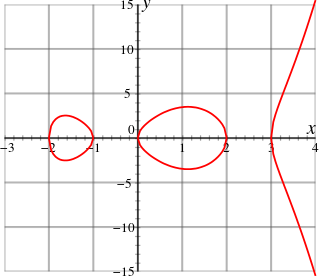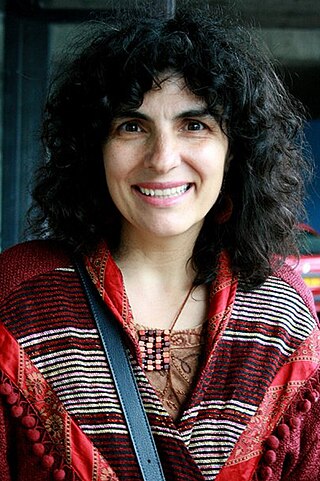In mathematics, the Langlands program is a set of conjectures about connections between number theory and geometry. It was proposed by Robert Langlands. It seeks to relate Galois groups in algebraic number theory to automorphic forms and representation theory of algebraic groups over local fields and adeles. It was described by Edward Frenkel as "grand unified theory of mathematics."

Jean-Pierre Serre is a French mathematician who has made contributions to algebraic topology, algebraic geometry and algebraic number theory. He was awarded the Fields Medal in 1954, the Wolf Prize in 2000 and the inaugural Abel Prize in 2003.

Pierre René, Viscount Deligne is a Belgian mathematician. He is best known for work on the Weil conjectures, leading to a complete proof in 1973. He is the winner of the 2013 Abel Prize, 2008 Wolf Prize, 1988 Crafoord Prize, and 1978 Fields Medal.
In mathematics, the étale cohomology groups of an algebraic variety or scheme are algebraic analogues of the usual cohomology groups with finite coefficients of a topological space, introduced by Grothendieck in order to prove the Weil conjectures. Étale cohomology theory can be used to construct ℓ-adic cohomology, which is an example of a Weil cohomology theory in algebraic geometry. This has many applications, such as the proof of the Weil conjectures and the construction of representations of finite groups of Lie type.
In algebraic geometry, motives is a theory proposed by Alexander Grothendieck in the 1960s to unify the vast array of similarly behaved cohomology theories such as singular cohomology, de Rham cohomology, etale cohomology, and crystalline cohomology. Philosophically, a "motif" is the "cohomology essence" of a variety.

In mathematics, arithmetic geometry is roughly the application of techniques from algebraic geometry to problems in number theory. Arithmetic geometry is centered around Diophantine geometry, the study of rational points of algebraic varieties.
In mathematics, Serre's modularity conjecture, introduced by Jean-Pierre Serre, states that an odd, irreducible, two-dimensional Galois representation over a finite field arises from a modular form. A stronger version of this conjecture specifies the weight and level of the modular form. The conjecture in the level 1 case was proved by Chandrashekhar Khare in 2005, and a proof of the full conjecture was completed jointly by Khare and Jean-Pierre Wintenberger in 2008.
Continuation of the Séminaire Nicolas Bourbaki programme, for the 1960s.
In mathematics, a Tannakian category is a particular kind of monoidal category C, equipped with some extra structure relative to a given field K. The role of such categories C is to generalise the category of linear representations of an algebraic group G defined over K. A number of major applications of the theory have been made, or might be made in pursuit of some of the central conjectures of contemporary algebraic geometry and number theory.
In mathematics, the local Langlands conjectures, introduced by Robert Langlands, are part of the Langlands program. They describe a correspondence between the complex representations of a reductive algebraic group G over a local field F, and representations of the Langlands group of F into the L-group of G. This correspondence is not a bijection in general. The conjectures can be thought of as a generalization of local class field theory from abelian Galois groups to non-abelian Galois groups.
In algebraic number theory, Leopoldt's conjecture, introduced by H.-W. Leopoldt, states that the p-adic regulator of a number field does not vanish. The p-adic regulator is an analogue of the usual regulator defined using p-adic logarithms instead of the usual logarithms, introduced by H.-W. Leopoldt.
In mathematics, a p-adic zeta function, or more generally a p-adic L-function, is a function analogous to the Riemann zeta function, or more general L-functions, but whose domain and target are p-adic. For example, the domain could be the p-adic integersZp, a profinite p-group, or a p-adic family of Galois representations, and the image could be the p-adic numbersQp or its algebraic closure.
In mathematics, p-adic Hodge theory is a theory that provides a way to classify and study p-adic Galois representations of characteristic 0 local fields with residual characteristic p. The theory has its beginnings in Jean-Pierre Serre and John Tate's study of Tate modules of abelian varieties and the notion of Hodge–Tate representation. Hodge–Tate representations are related to certain decompositions of p-adic cohomology theories analogous to the Hodge decomposition, hence the name p-adic Hodge theory. Further developments were inspired by properties of p-adic Galois representations arising from the étale cohomology of varieties. Jean-Marc Fontaine introduced many of the basic concepts of the field.

Jean-Marc Fontaine was a French mathematician. He was one of the founders of p-adic Hodge theory. He was a professor at Paris-Sud 11 University from 1988 to his death.
In mathematics, the formalism of B-admissible representations provides constructions of full Tannakian subcategories of the category of representations of a group G on finite-dimensional vector spaces over a given field E. In this theory, B is chosen to be a so-called (E, G)-regular ring, i.e. an E-algebra with an E-linear action of G satisfying certain conditions given below. This theory is most prominently used in p-adic Hodge theory to define important subcategories of p-adic Galois representations of the absolute Galois group of local and global fields.

Guy Henniart (born 1953, Santes) is a French mathematician at Paris-Sud 11 University. He is known for his contributions to the Langlands program, in particular his proof of the local Langlands conjecture for GL(n) over a p-adic local field—independently from Michael Harris and Richard Taylor—in 2000.
In mathematics, the Fontaine–Mazur conjectures are some conjectures introduced by Fontaine and Mazur about when p-adic representations of Galois groups of number fields can be constructed from representations on étale cohomology groups of varieties. Some cases of this conjecture in dimension 2 have been proved by Dieulefait (2004).

Leila Schneps is an American mathematician and fiction writer at the Centre national de la recherche scientifique working in number theory. Schneps has written general audience math books and, under the pen name Catherine Shaw, has written mathematically themed murder mysteries.
Wiesława Krystyna Nizioł is a Polish mathematician, director of research at CNRS, based at Institut mathématique de Jussieu. Her research concerns arithmetic geometry, and in particular p-adic Hodge theory, Galois representations, and p-adic cohomology.

Laurent Fargues is a French mathematician working in number theory and arithmetic geometry.












